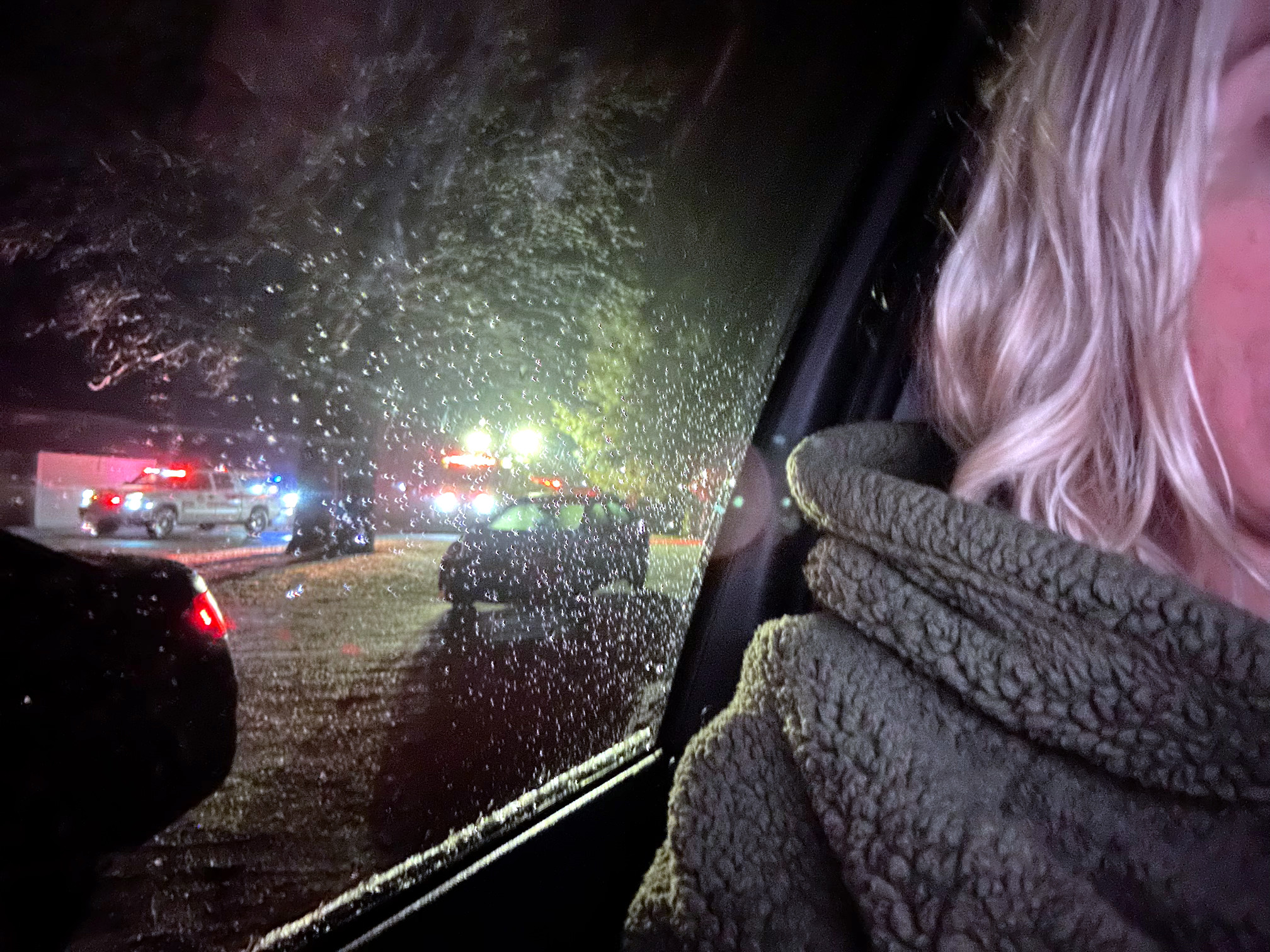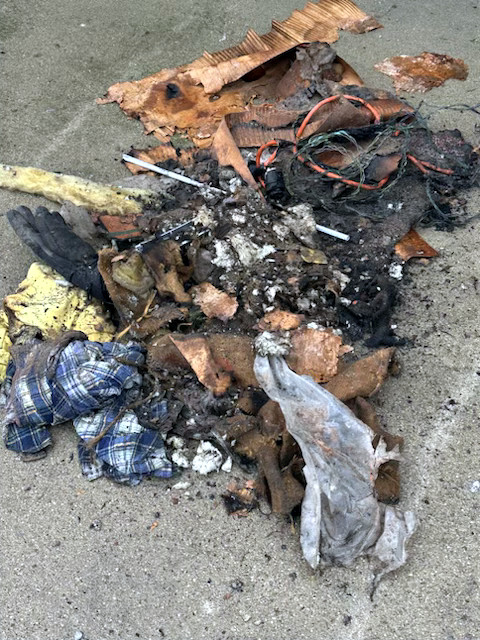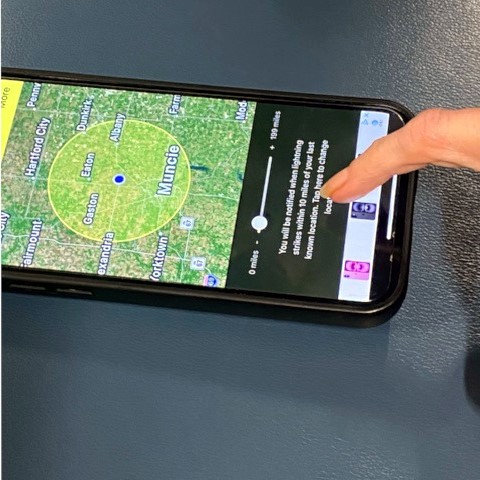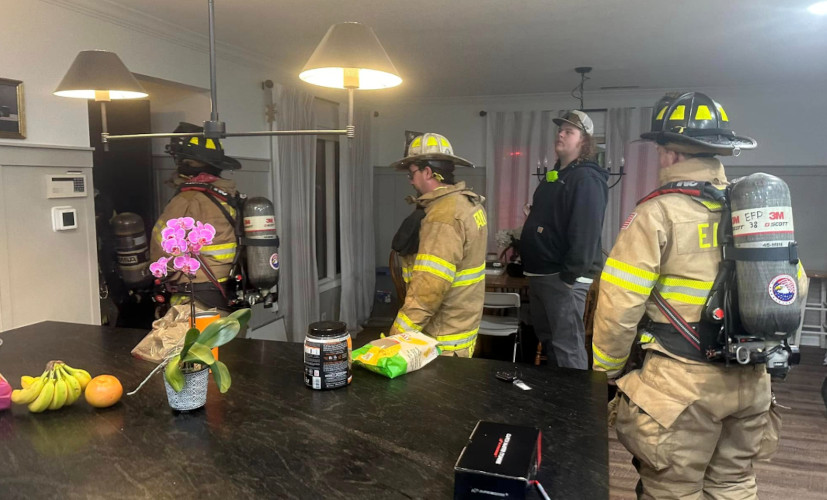By Rylan Oliver
Delta freshman Maelle Hewitt dislikes storms, so she settled into bed and put on her headphones to drown out the loud crashes of an impending storm.
BANG!
“I already hate lightning so when it struck I started freaking out,” she said. “It was so loud. I just went silent and waited for my parents to come get me.”
On Wednesday, Feb. 5, two Delta families had a lightning strike hit their house, one of them being the Hewitt residence in Farmington addition. Both strikes occurred around 10:30 p.m.
After the strike she realized lightning had connected with the second floor bedrooms. Although Maelle only heard the strike, it’s a different story for her brother Luke, a junior.
“I jumped when I saw it. It was like a spider web down the wall,” Luke claims. “I watched it go down the wall to my TV.”
Firefighters entered the home (see photo above) and went through Luke’s closet to access the attic.
The Hewitt family had damages such as fried televisions, an Xbox, sound system, and heating.
Another family suffered even more destruction. Delta secretary Kelli Edwards and her husband, Dave, were home along with senior Bronson Edwards when their house, located two miles north of Country Village, was also struck.
Unlike the Hewitts, the bolt hit a lightning rod on top of the house. There was a problem with the rod causing the lightning to stop and spread through the first floor instead of being absorbed into the ground.
As a result of the lightning a fire started in the crawl space of the house, but they didn’t know until it was too late. Originally they thought the dryer had been fried because of the continuous smoke pouring out of it, but that was not the case.
They waited and waited, but the smoke never stopped. Kelli decided to get the rest of her family out of the house and into the car.

Her husband continued searching and found the fire in the crawl space. He used a fire extinguisher to put out the fire, but it ignited again after his efforts.
“We extinguished the fire or so we thought.” Kelli said.
The fire department arrived and did a sweep of the house and found the fire had started up again. They quickly extinguished it and monitored it for some time before leaving.
After the fire department left the family was able to assess all of the damages. The home was the only one in their neighborhood without power. They looked around and saw that the transformer connected to their house had busted.
The reason for this is that an average lightning bolt sends about 300 million volts of electricity into whatever it hits. A transformer can only transfer 7,200 volts at a time. This caused the transformer to explode.
Kelli decided new paint was needed everywhere on the entire first floor due to the long lasting smoke damage after the crawl space had been on fire.

The Edwards’ wardrobes had absorbed smoke, making them unwearable. Kelli looked into a cleaning service, but decided it would be much faster to clean the clothes herself at a laundromat.
Lightning can cause this much destruction to these homes because of its unique characteristics , such as being 30,000 times faster than a bullet, or being able to reach temperatures of 54,000℉, which is five times hotter than the sun.
Although lightning can cause so much destruction to a house it is much different for people. Only one of every 10 people who are actually struck by lightning die, according to the National Weather Service.
Direct strikes are often fatal. But in non-direct strikes, much of the lightning’s energy has been absorbed by other things before it reaches the body. The current then flows over the body rather than through it.
Although most wouldn’t die from being struck, they would still receive significant injuries, including burns, cardiac arrest, and even brain damage. This is why Mrs. Jen Detweiler, Delta athletic trainer, takes so much caution during turbulent weather.
She has a radar app that allows her to monitor storm activity. This is important because she plays a key role in the athletes’ safety. Detweiler has the final say in all lightning related delays and cancellations.

State athletic association safety guidelines say an outdoor event must be delayed by at least 30 minutes after a lightning strike.
If the strike is within a 10 mile radius of the event then the delay must occur.
Detweiler has the final say in all delays. This is because she is most likely to be at every event and also often has the free time to monitor the lightning. When she was an athletic trainer at Indiana Wesleyan University, she remembers a game that was impacted in a major way by lightning.

The game was delayed four hours from a 7:30 p.m. start time, which then started at 11:30. This was a college football game that they finished after the delay.
Despite the importance of the game, it had to be delayed just like all others because the safety of the players far outweighs that of the game in her eyes.






